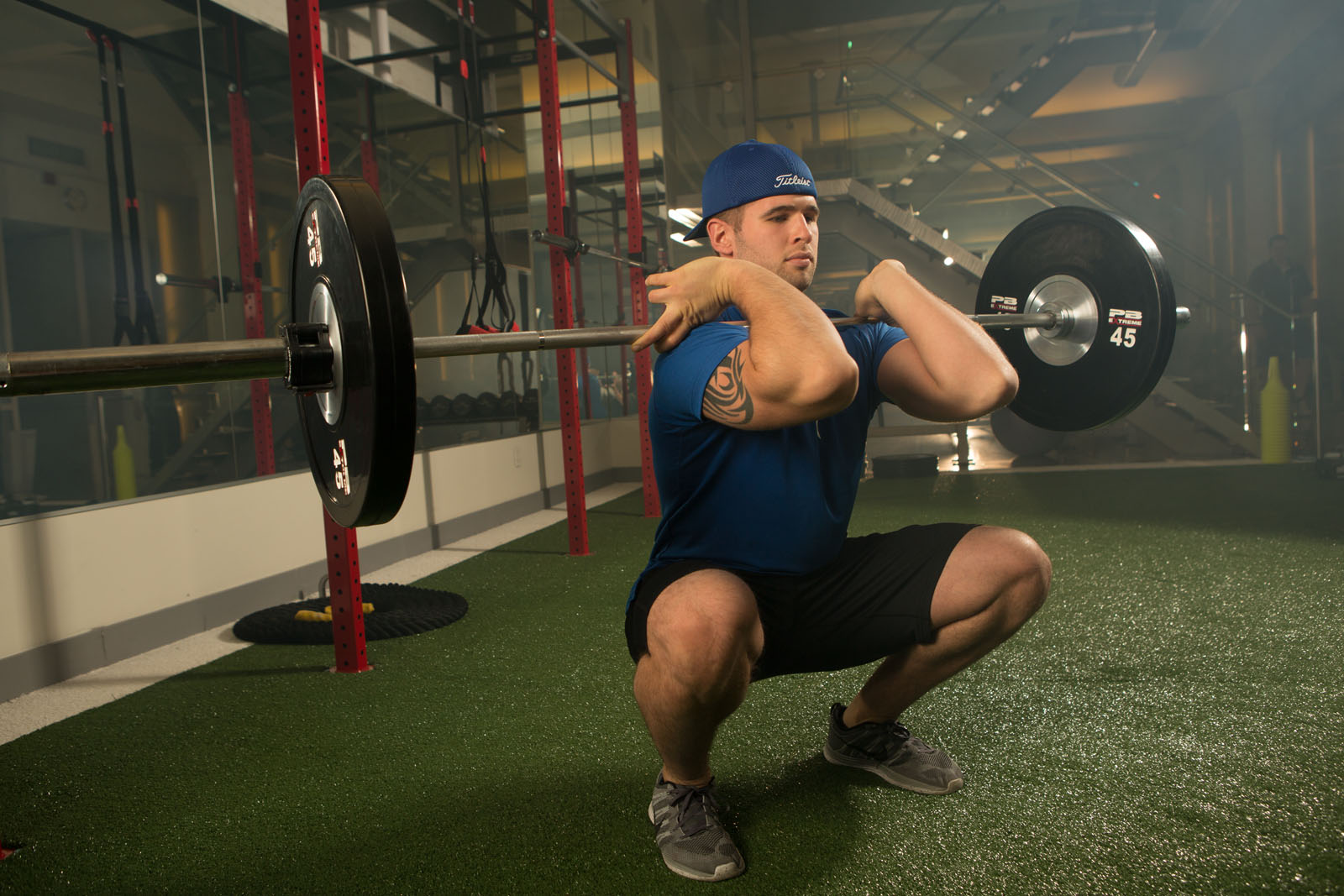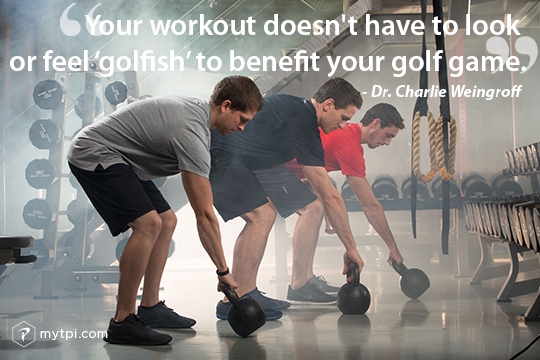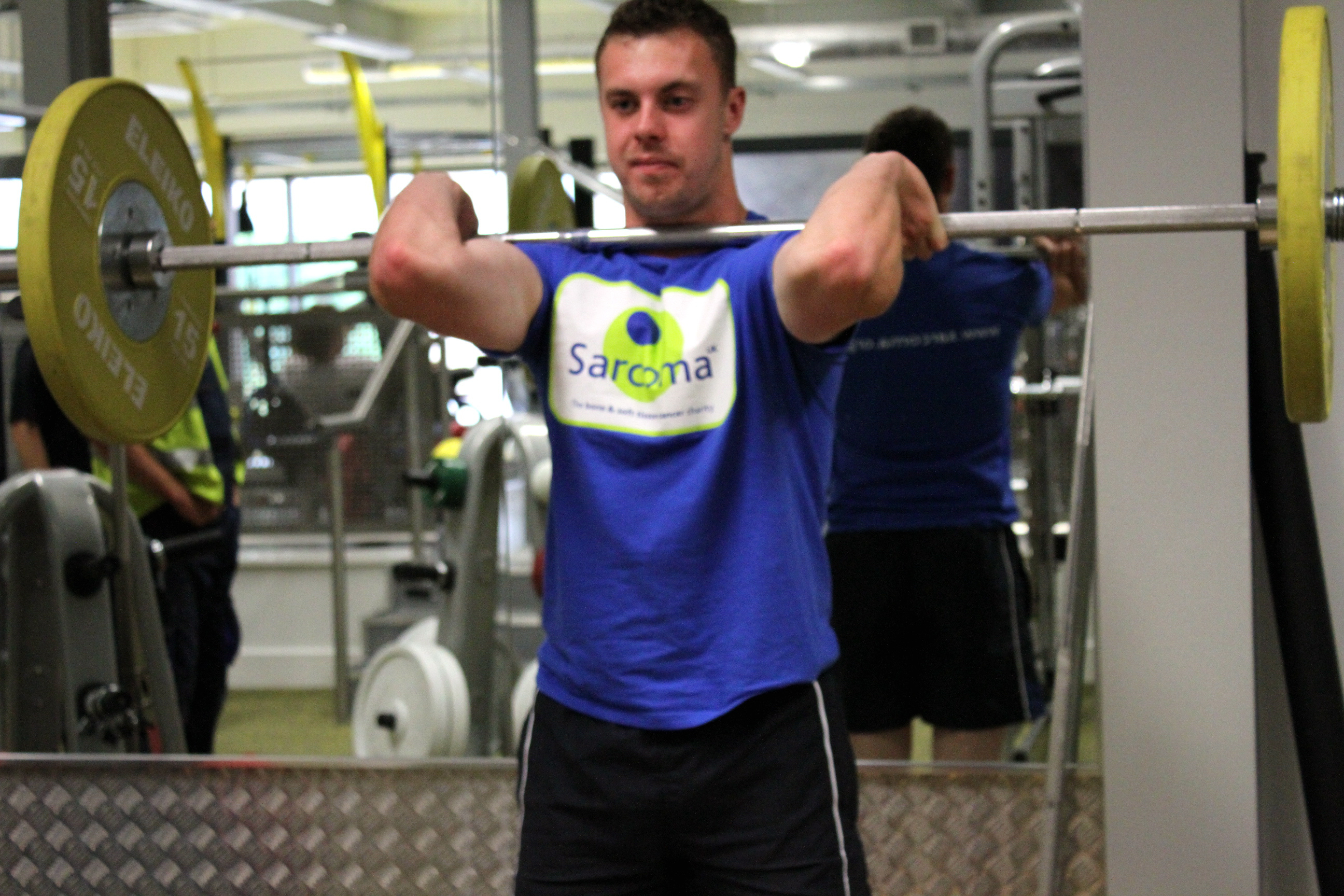IMPROVE MY GAME
Articles
What Golf-Specific Training Really Is

In the simplest possible terms, specificity means that if you wish to develop a certain aspect of training then you emphasise that aspect in your training programme. The training of a squash player, for example, will therefore look quite different from someone who is training for the London Marathon.
Athletes who compete in relatively specific directions and actions without the elements of contact and chaos can benefit from training with a high degree of specificity to their goal activities (although the athlete should be sure to train in both directions).
The above can obviously apply to golfers, but what actually is specificity in golf training?
Golf-specific training doesn’t mean the exercise has to mimic the swing.

The overhead squat pattern, for example, isn’t seen in the golf swing. However, it is a highly popular screen for golfers and much has been written about its' importance to a properly executed golf swing. As Gray Cook explains here, we know hip rotation is typically important to properly execute the golf swing; the same level of hip rotation is also required to squat deep. Additionally, the overhead squat requires us to maintain t-spine extension - vital for good posture and rotation in the swing - whilst activating the core - essential for the transfer of power up the kinetic chain in the golf swing. A movement pattern doesn’t have be seen in the sport to carryover to that sport.
As Mel Siff writes in his book Supertraining:
To fulfill the [specificity] criteria of correspondence with respect to the amplitude and direction of movement, it is advisable to select the exact starting position and posture of the athlete, as well as to calculate the direction of action of the forces associated with the working links of the system and the additional load. The line of action of the applied external resistance and of the loaded movement as a whole must also be taken into account.
An example may help explain further what this actually means; a skater may execute single-leg squats from the floor or from a bench. These exercises strengthen the leg muscles supporting the body and the static-endurance of the back muscles to maintain athletic posture, but do not fully imitate the working of the muscles for the push-off, where the force is directed backward.
The golf swing is largely dependent on rotational and lateral movement to develop power, although there are also elements of vertical and horizontal power to varying degrees. There is a hip extension moment as we approach the ball in the downswing. This means that for most people, the pelvis we be closer to the ball on striking than at set-up. From this we can assume some level of horizontal displacement of force has occurred. Similarly, many players (Bubba Watson being a great example, whom I talked about in more detail in this article) display a pronounced dip to begin their downswing and then explode upwards as they approach impact, demonstrating a more vertical force displacement. This suggests there is merit to developing force production abilities in all directions for golfers, although it may be pertinent to move to more lateral and rotational measures as we move towards the start of a competitive season. Interestingly, as some players utilize more lateral means of generating power, whilst others use more rotational and horizontal, and some more vertical, an argument could be made that different exercises represent truly specific benefits to different golfers.
Siff further explains how sport typically involves simultaneous coordinated tension of muscle groups, such as the simultaneous flexion and extension at the two hip joints in running, where the angular movement of one leg enhances the push-off movement of the other. For the golf swing, this most easily equates to the disassociation of the upper and lower body.
By this measure, something like a sled push can be seen as fairly golf specific, featuring an element of hip extension to produce horizontal force, disassociation of the upper and lower body (the legs move whilst upper body remains stable), summation of forces proximally to distally (from the ground to the arms, through the core), whilst the position taken up to push fairly accurately mimics the golf posture.
Let us also consider speed and intensity for a moment as I believe this to be one the biggest failings in the weighted swings, cable machine or dumbbell swings and bosu/stability ball swings that might traditionally be considered golf-specific.
Training should be speed, time constraint and intensity specific, not just movement specific.
Strength and conditioning training modalities can be characterised as a continuum, with maximal strength modalities (a 1RM deadlift for example) at one end and pure speed (i.e. sprinting) at the other.

The golf swing is an incredibly fast movement and the external resistance utilised (the club) is relatively light, and will therefore sit pretty close to the pure speed end of the continuum. As such, specific training should focus on low intensities (In strength and conditioning, intensity has very clear definition meaning percentage of 1RM), high-speed movements, occurring within a similar time frame to the golf swing.
An obvious example would be something like a split-stance rotational scoop toss. Much like the sled push, this also features disassociation of the upper and lower body and summation of forces proximally to distally, whilst the position taken up to push fairly accurately mimics golf posture.
Specificity in energy systems training
If we consider the energy system demands of golf in more detail, assuming you don’t take the cart and you must walk (admittedly across sometimes substantially undulating terrain) for sometimes up to 5 hours. Walking is a relatively low intensity activity that utilises the aerobic energy system, so we must develop the capacity to operate at low intensity for a long period of time. The golf swing itself is obviously a high power output movement occurring very quickly, this utilises the ATP-PC energy system. This only provides energy to the muscles for a very short portion of time, but at a very high power output. It requires short intervals and long rest periods to train effectively. This is a somewhat controversial topic but my suggestions would be to make sure to train your steady state cardio at a very slow place for long duration. To me, walking and playing golf itself are the best bets here, and to keep your interval training to short powerful bursts of 10 seconds or so with relatively long rest periods of even a minute or above, depending on your fitness level.
A note on when specificity is appropriate
For professional/competitive golfers, we must understand that the competitive golf season is a long one, whilst amateurs (and quite a few pros!) typically don’t have a lot of exposure to physical preparation for golf. Therefore, it is safe to say that most golfers live executing movements on the furthest end of the general-to-specific continuum. Therefore, the greatest training affect according to the law of diminishing returns, and largest portion of their workload should be dedicated to work that falls on the other (general) end of that continuum. This is most easily identified as standard maximal strength training type modalities.
To put it another way ‘golf-specific’ strengthening exercises are not appropriate or necessary when generally weak. It’s much more valuable to become strong overall, and only then pursue golf-specific strength. Staying injury free should be the goal of any training program first and foremost. The ability to absorb the forces generated in the golf swing, for instance, is important in staying injury free and generally associated with eccentric strength.

Nick Buchan is a UK Strength & Conditioning Association member, golf coach, AGMS graduate and TPI Certified expert. His goal is to help golfers become stronger and play better by delivering the best in cutting edge training advice. Website: www.strongergolf.org